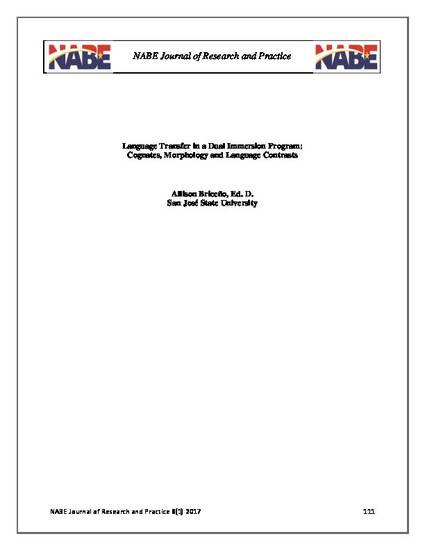
Article
Language transfer in a Dual Immersion program: Cognates, morphology and language contrasts
NABE Journal of Research and Practice
(2017)
Abstract
This comparative case study explored language transfer patterns implemented in two elementary dual immersion classrooms. Following Dual Immersion norms, a strict separation of languages was maintained, which inhibited, but did not eliminate, the teachers’ use of transfer practices. Research data included three months of classroom observations and monthly interviews with teachers. Findings showed that teachers used cognates and morphology to demonstrate similarities between Spanish and English, and they contrasted languages to help students notice and understand differences between the languages. Students evidenced independent use of these strategies (cognates, morphology and language contrasts), and transfer was observed both from L1 to L2 and from L2 to L1. Teachers’ beliefs about transfer influenced whether and how they taught it. Instructional implications include an expanded focus on theory and instructional practices that support transfer, and meaning-based vocabulary and comprehension instruction. Programmatic implications include reconsidering the strict language separation rule in Dual Immersion programs.
Keywords
- Dual immersion,
- cognates,
- morphology,
- language contrasts,
- emergent bilinguals,
- language transfer
Disciplines
Publication Date
2017
Publisher Statement
This article was originally published in NABE Journal of Research and Practice, volume 8, issue 1, 2017. ©2017 National Association For Bilingual Education.
This article is also available online at this link.
Citation Information
Allison Briceño. "Language transfer in a Dual Immersion program: Cognates, morphology and language contrasts" NABE Journal of Research and Practice Vol. 8 Iss. 1 (2017) p. 112 - 132 Available at: http://works.bepress.com/allison-briceno/5/
Creative Commons license

This work is licensed under a Creative Commons CC_BY International License.
